Megumi Kameyama
SRI International
Recognizing Referential Links: An Information Extraction Perspective
Jul 18, 1997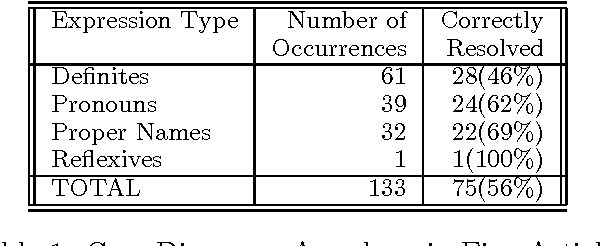
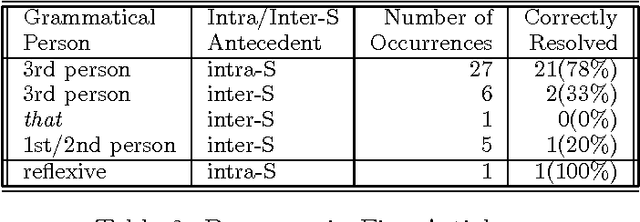
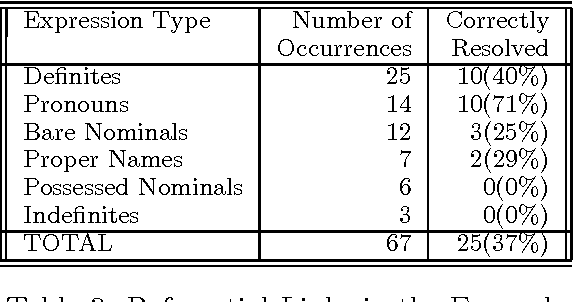
Abstract:We present an efficient and robust reference resolution algorithm in an end-to-end state-of-the-art information extraction system, which must work with a considerably impoverished syntactic analysis of the input sentences. Considering this disadvantage, the basic setup to collect, filter, then order by salience does remarkably well with third-person pronouns, but needs more semantic and discourse information to improve the treatments of other expression types.
* 8 pages. a paper in the proceedings of the ACL/EACL'97 workshop on anaphora resolution
Stressed and Unstressed Pronouns: Complementary Preferences
Jul 18, 1997Abstract:I present a unified account of interpretation preferences of stressed and unstressed pronouns in discourse. The central intuition is the Complementary Preference Hypothesis that predicts the interpretation preference of a stressed pronoun from that of an unstressed pronoun in the same discourse position. The base preference must be computed in a total pragmatics module including commonsense preferences. The focus constraint in Rooth's theory of semantic focus is interpreted to be the salient subset of the domain in the local attentional state in the discourse context independently motivated for other purposes in Centering Theory.
Intrasentential Centering: A Case Study
Jul 16, 1997


Abstract:One of the necessary extensions to the centering model is a mechanism to handle pronouns with intrasentential antecedents. Existing centering models deal only with discourses consisting of simple sentences. It leaves unclear how to delimit center-updating utterance units and how to process complex utterances consisting of multiple clauses. In this paper, I will explore the extent to which a straightforward extension of an existing intersentential centering model contributes to this effect. I will motivate an approach that breaks a complex sentence into a hierarchy of center-updating units and proposes the preferred interpretation of a pronoun in its local context arbitrarily deep in the given sentence structure. This approach will be substantiated with examples from naturally occurring written discourses.
Discourse Preferences in Dynamic Logic
Jul 16, 1997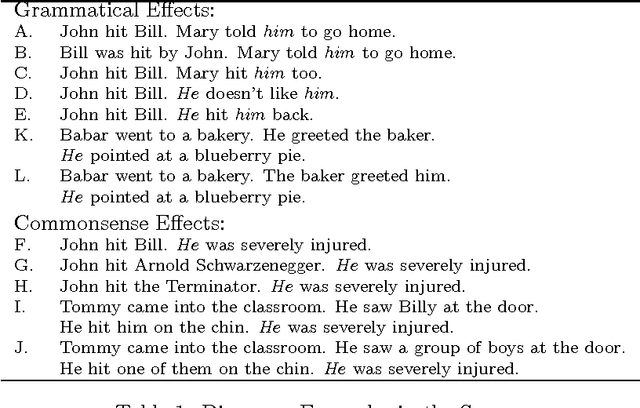
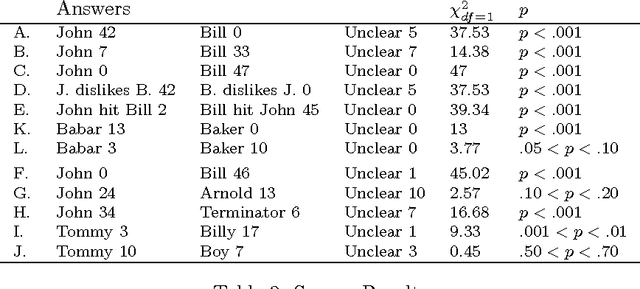
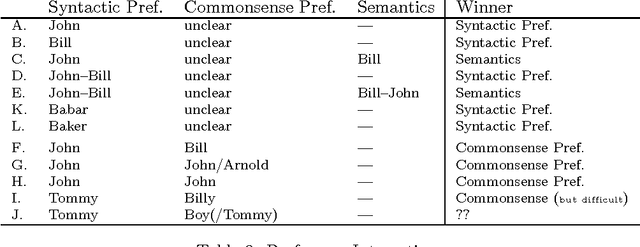

Abstract:In order to enrich dynamic semantic theories with a `pragmatic' capacity, we combine dynamic and nonmonotonic (preferential) logics in a modal logic setting. We extend a fragment of Van Benthem and De Rijke's dynamic modal logic with additional preferential operators in the underlying static logic, which enables us to define defeasible (pragmatic) entailments over a given piece of discourse. We will show how this setting can be used for a dynamic logical analysis of preferential resolutions of ambiguous pronouns in discourse.
FASTUS: A Cascaded Finite-State Transducer for Extracting Information from Natural-Language Text
May 20, 1997Abstract:FASTUS is a system for extracting information from natural language text for entry into a database and for other applications. It works essentially as a cascaded, nondeterministic finite-state automaton. There are five stages in the operation of FASTUS. In Stage 1, names and other fixed form expressions are recognized. In Stage 2, basic noun groups, verb groups, and prepositions and some other particles are recognized. In Stage 3, certain complex noun groups and verb groups are constructed. Patterns for events of interest are identified in Stage 4 and corresponding ``event structures'' are built. In Stage 5, distinct event structures that describe the same event are identified and merged, and these are used in generating database entries. This decomposition of language processing enables the system to do exactly the right amount of domain-independent syntax, so that domain-dependent semantic and pragmatic processing can be applied to the right larger-scale structures. FASTUS is very efficient and effective, and has been used successfully in a number of applications.
* 22 pages. In E. Roche and Y. Schabes, eds., Finite State Devices for Natural Language Processing, MIT Press, Cambridge, Massachusetts, in press
Indefeasible Semantics and Defeasible Pragmatics
Jun 14, 1995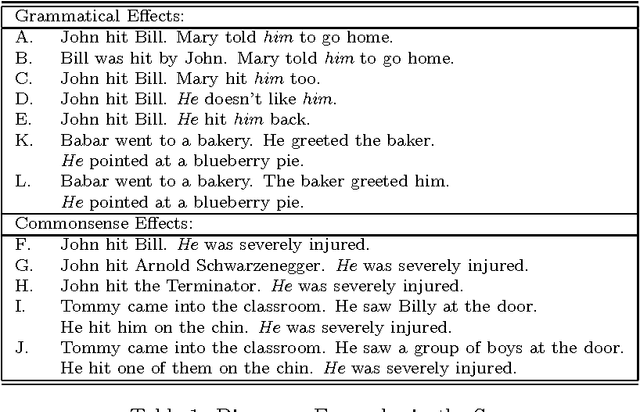
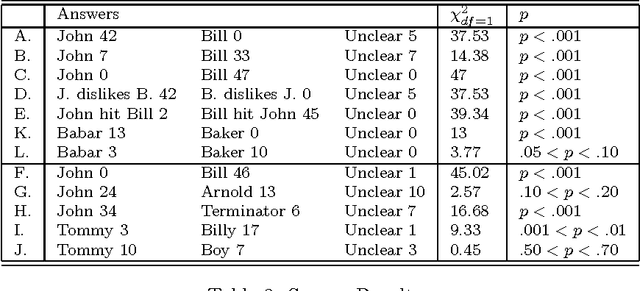
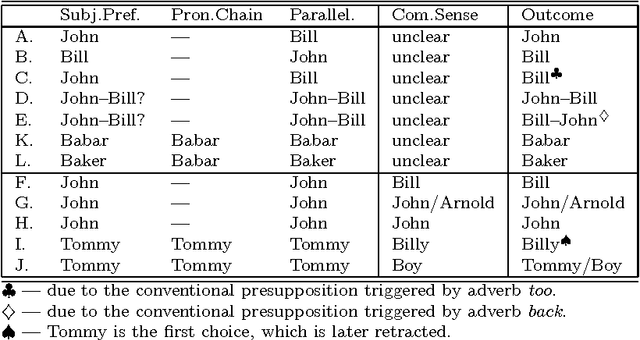
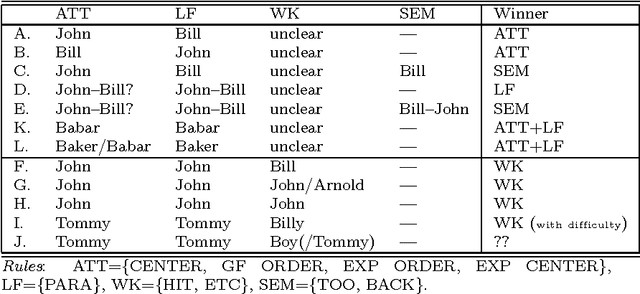
Abstract:An account of utterance interpretation in discourse needs to face the issue of how the discourse context controls the space of interacting preferences. Assuming a discourse processing architecture that distinguishes the grammar and pragmatics subsystems in terms of monotonic and nonmonotonic inferences, I will discuss how independently motivated default preferences interact in the interpretation of intersentential pronominal anaphora. In the framework of a general discourse processing model that integrates both the grammar and pragmatics subsystems, I will propose a fine structure of the preferential interpretation in pragmatics in terms of defeasible rule interactions. The pronoun interpretation preferences that serve as the empirical ground draw from the survey data specifically obtained for the present purpose.
 Add to Chrome
Add to Chrome Add to Firefox
Add to Firefox Add to Edge
Add to Edge